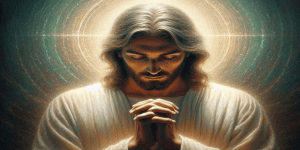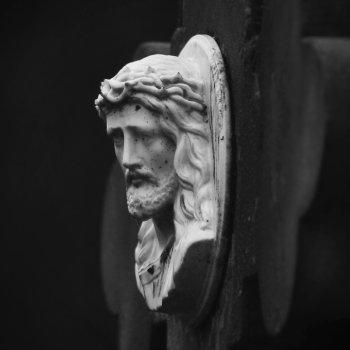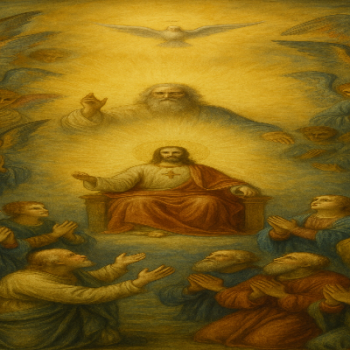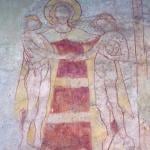
Imagine a father sending his son to a far-off place, knowing that the son would be tortured and killed. Making matters even worse, this was done to satisfy justice for a crime the son did not commit. Does such a scenario constitute child abuse? Obviously, other factors would have to be evaluated, such as the age of the son and the circumstances surrounding the event. Nevertheless, such an event does seem to be questionable at best.
What exactly does the above story have to do with the Crucifixion? For many critics, the belief that God the Father sent His only Son to be crucified constitutes a kind of cosmic child abuse. In this essay, I will examine this claim and argue that the solution is a proper understanding of trinitarian theory.
There are several explanations for how Christ’s death on the Cross effected our salvation. The charge that the Crucifixion is divine child abuse generally occurs in reference to the penal theory of atonement. The penal theory argues that sin has incurred God’s wrath. Divine justice must be satisfied for God’s wrath to abate. Said differently, God’s justice must be executed for God’s mercy to take place. Since fallen man cannot provide adequate propitiation, God sent His Son into the world (the Incarnation) to take upon Himself the penalty due to humanity.
The penal theory builds on the various atonement sacrifices of the Old Testament. The book of Leviticus details how the Israelites would seek atonement by “transferring” their sins onto an animal who would then receive the punishment due (death). Within the Old Testament, this practice reaches its pinnacle in the binding of Isaac.
The story of Abraham and Isaac most closely resembles the interplay of how God sends the Son to be a propitiation for sin. Since it is this aspect that draws the charge of child abuse, it is beneficial to study the story of Abraham and Isaac.
In the twenty-second chapter of Genesis, we read how God tested Abraham. God tells Abraham to take his son Isaac to the land of Moriah and offer him as a sacrifice. As they approach the mountain designated by God, Isaac, unaware of his fate, asks his father where the lamb they will use for the sacrifice is. Abraham tells him that God will provide. Once they arrive at the chosen place, Abraham builds an altar, arranges the wood, and binds Isaac. He then places Isaac on the altar. “Then Abraham reached out and took the knife to slaughter his son. But the angel of the Lord called to him from heaven, ‘Abraham, Abraham!’ ‘Here I am,’ he answered. ‘Do not lay your hand on the boy,’ said the angel. ‘Do not do the least thing to him. For now, I know that you fear God since you did not withhold from me your son, your only one.”
All of this lays the foundation for the Incarnation and Passion of Christ. How, then, can Catholicism answer the charge that the Passion of Christ constitutes a kind of child abuse? The answer lies in understanding the doctrine of the Holy Trinity. The doctrine of the Holy Trinity is at the heart of Christianity’s understanding of God. Succinctly stated, the doctrine of the Holy Trinity teaches that although God is one, three persons, the Father, the Son, and the Holy Spirit, exist in God. This is knowable to human beings only through divine revelation.
What is extremely important to the topic at hand is that “the divine Persons are also inseparable in what they do. But within the single divine operation, each shows forth what is proper to him in the Trinity, especially in the divine missions of the Son’s Incarnation and the gift of the Holy Spirit.” (Catechism of the Catholic Church, paragraph 267). This inseparability is born of the belief that the three divine persons share one divine essence. Moreover, each person of the Trinity shares the same divine will. Therefore, when we discuss the Incarnation, life, Crucifixion, and Resurrection of Christ, we must admit that all three persons of the Trinity are at work. That is to say, the death of Jesus on the Cross is God acting together, with one will, for one purpose – to deliver humanity from the curse of sin.
A proper understanding of the Trinity solves the claim of cosmic child abuse because Jesus’ will cannot be divorced from the will of God the Father or the will of the Holy Spirit. That is to say that the Son is not acting against His will but only in unison with the will of the Holy Trinity. Scripture supports this argument.
“I and the Father are one,” Jesus tells us. (John 10:30). Clearly, Christ is not saying He and the Father are the same person; rather, Christ is claiming He shares the divine nature with the Father.
In another passage from John’s Gospel, Christ leaves no room for ambiguity regarding the agency of the Crucifixion and Resurrection. “No one takes it [Christ’s life] from me, but I lay it down on my own. I have the power to lay it down and the power to take it up again.” As is often the case, Christ speaks in the person of God, with the power over life and death.
Finally, assigning the violence visited upon Christ to God the Father is illogical. While it is true that Christ submitted to the Crucifixion, the source of His suffering and death lies solely with all sinners. Rather than perverting the Incarnation and Passion of Christ by viewing it as a form of child abuse, we should understand it as the one God seeking to save His creation from the devasting effects of sin. Said differently, “God so loved the world that he gave his only Son so that everyone who believes in him might not perish but might have eternal life.” (John 3:16).













